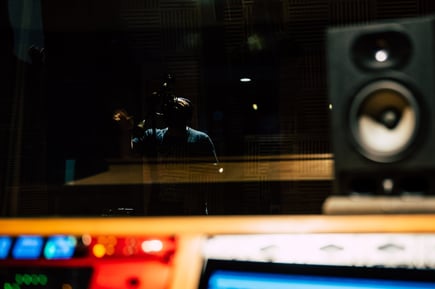Greetings, fellow music creators and sound aficionados! In the vast realm of music production, vocals stand as the heart and soul of countless tracks. To truly make your music shine, you must master the art of vocal processing. Today, we explore the techniques that can elevate your vocal recordings from raw captures to polished gems.

The Crucial Role of Vocal Processing
Vocal processing is the journey of refining and enhancing the human voice. It's not just about making it sound better but also ensuring that it fits seamlessly into your mix.
Recording Quality Matters
Great vocal processing starts with a great vocal recording. Use a quality microphone in a well-treated recording space to capture clean and clear vocal tracks.
Basic Processing
The essentials of vocal processing include compression to even out dynamics and equalization (EQ) to shape the frequency response. A high-pass filter can remove unwanted low-frequency rumble.
Effects and Reverb
Reverb adds space and depth to your vocals, while delay can create a sense of width and ambiance. Experiment with different reverb types and delay times to find the perfect fit for your track.
Harmony and Doubling
Vocal harmonies and doubling involve layering multiple vocal tracks. This can add richness and dimension to your vocals. Carefully pan and process these additional tracks to avoid phase issues.

Autotune and Pitch Correction
Autotune and pitch correction tools can help you achieve pitch-perfect vocals. Use them subtly to enhance, not to overcorrect, as some imperfections can add character to your vocals.
De-Essing
De-essing is essential for reducing sibilance and harsh "S" sounds. It involves targeting and reducing the high-frequency spikes that occur during pronounced "S" and "SH" sounds.
Creative Effects
Beyond the basics, creative effects like vocoders, distortion, and modulation can transform your vocals into unique sonic textures. These effects can add an experimental edge to your music.
Layering and Stacking
For powerful choruses and hooks, layering and stacking vocals is an effective technique. Record multiple takes and blend them to create a larger-than-life vocal sound.
Emotional Expression
The most critical aspect of vocal processing is preserving the emotional delivery of the performance. Avoid over-processing, which can strip away the authenticity and feeling in the vocals.
Conclusion
Vocal processing is both an art and a science, a delicate balance between enhancing and preserving the magic of the human voice. With the right techniques and a keen ear, you can take your vocal recordings to new heights, ensuring that they not only sound great but also resonate deeply with your audience.
So, embark on your vocal processing journey with confidence, experiment with different techniques, and let the expressive power of the human voice shine in your music. Your vocals will thank you, and so will your listeners!
Happy vocal processing and music creation!

















_Cropped.png?width=1600&name=02%20(2)_Cropped.png)




















Your Comments :